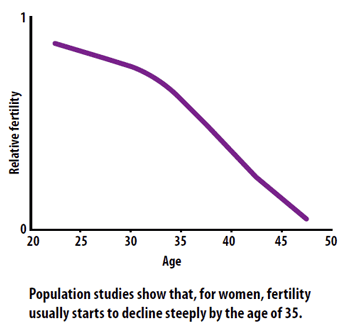Although successful vasectomy is critical step for your fertility, keeping your sperm healthy is also important for increasing your fertility. This blog will talk about the health of your sperm, and how it may help you to understand the various factors that can affect male fertility.
Sperm health depends on various factors, including sperm quantity, quality and movement. The more sperm in each ejaculation you have, the more sperm with a normal shape and structure, or if more than 40 percent of your sperm are moving, the more likely you are to be fertile. Aging does affect sperm health. Sperm movement and the number of healthy sperm might decline after age 50, affecting a man’s fertility.
 There are some simple steps in changing your lifestyle to boost your fertility. It is helpful to eat a healthy diet with plenty of fruits and vegetables, exercise daily, and reduce your weight. Obesity may negatively affect sperm quality, reducing both sperm count and sperm movement. Smoking, alcohol and illegal drugs also affect sperm count, quality and movement. Quit smoking, drink less than two glasses of alcohol or coffee daily, and lose the extra pounds to achieve a healthy weight. Also stay away from toxins, such as pesticides and lead, however if you must work with them, do so safely with protective clothing and safety precautions. Taking supplements may not actually be beneficial, so focus more on your overall health.
There are some simple steps in changing your lifestyle to boost your fertility. It is helpful to eat a healthy diet with plenty of fruits and vegetables, exercise daily, and reduce your weight. Obesity may negatively affect sperm quality, reducing both sperm count and sperm movement. Smoking, alcohol and illegal drugs also affect sperm count, quality and movement. Quit smoking, drink less than two glasses of alcohol or coffee daily, and lose the extra pounds to achieve a healthy weight. Also stay away from toxins, such as pesticides and lead, however if you must work with them, do so safely with protective clothing and safety precautions. Taking supplements may not actually be beneficial, so focus more on your overall health.
Stress can decrease sexual function and interfere with the hormones needed to produce sperm. If the body is under stress, whether it is emotional, physical or financial, it does not help male fertility. One great way to reduce stress is to force your body to relax with getting enough sleep, exercise, yoga, and getting a massage or acupuncture on a regular basis.
Always practice safe sex. Sexually transmitted diseases are a leading cause of infertility for both men and women. Most lubricants during sex will also interfere with sperm movement.
Try to stay away from certain heat sources because increased scrotal temperature can affect sperm production. Avoid hot tubs and hot baths (showers are fine). Also avoid wearing tight underwear or athletic shorts. If you bike or remain seated for long periods of time, take frequent breaks. Don’t place a laptop computer directly on your lap. Don’t keep your cell phone in your pants pocket.
Be cautious with medications, especially Calcium channel blockers, tricyclic antidepressants, anti-androgens, and anabolic steroids, as they can affect your fertility. Chemotherapy drugs and radiation can cause irreversible infertility.





